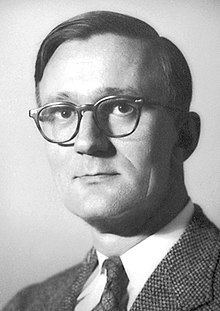Role Physicist Name Polykarp Kusch | ||
 | ||
Born January 26, 1911Blankenburg, District of Blankenburg, Duchy of Brunswick, German Empire ( 1911-01-26 ) Notable awards Nobel Prize in Physics (1955) Similar People Gordon Gould, Maria Goeppert‑Mayer, Charles H Townes, George II of Great Britain, Tsung‑Dao Lee | ||
Polykarp kusch lecture 2010
Polykarp Kusch (January 26, 1911 – March 20, 1993) was a German-American physicist. In 1955, the Nobel Committee gave a divided Nobel Prize for Physics, with one half to going to Kusch for his accurate determination that the magnetic moment of the electron was greater than its theoretical value, thus leading to reconsideration of—and innovations in—quantum electrodynamics. (The other 1955 physics laureate was Willis Eugene Lamb, who won for his work on the spectrum of hydrogen.)
Contents
- Polykarp kusch lecture 2010
- January 26 st phane grappelli jacqueline mary du pr polykarp kusch
- References
Kusch received his bachelor's degree in physics in 1931 from Case Western Reserve University. From the University of Illinois, he received his master's degree in 1933 and his Ph.D. in 1936. He spent much of his career as a professor at Columbia University in New York City, and served as the university's provost for several years before departing for the newly created University of Texas at Dallas. He worked on molecular beam resonance studies under I. I. Rabi, then discovered the electron anomalous magnet moment. Many measurements of magnetic moments and hyperfine structure followed. He expanded into chemical physics and continued to publish research on molecular beams. During his tenure at Columbia, he was the doctoral supervisor for Gordon Gould, the inventor of the laser.
Kusch House, a residential dormitory for undergraduate students at Case Western Reserve University in Cleveland, Ohio on the South Campus is named after Kusch. It is located on Carlton Road in Cleveland Heights. His widow Betty died in 2003, aged 77.
